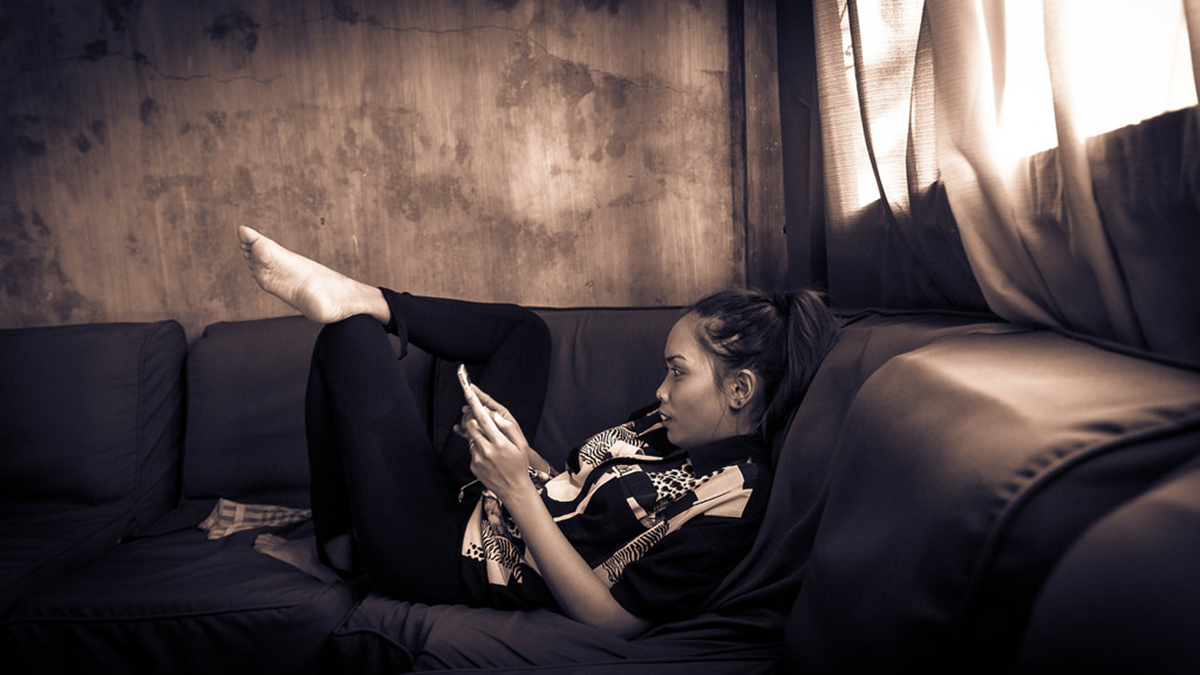Table of Contents
The two women in the UK who went temporarily blind from using their smartphones went to their doctors after having repeated episodes in which sight in one eye went away, came back, and went away again. This condition, known as transient monocular vision loss, is the kind of symptom that raises an alarm with emergency room and family care physicians. Often loss of vision is caused by a blood clot temporarily stopping circulation in the eye or in the brain. For the symptoms to come and go suggested that either there was some underlying problem that was generating lots of blood clots, or that a single blood clot was lodged in a precarious position from which it might become "stuck" and cause permanent damage.

One of the women was 22 years old. She had a habit of lying on her left side, her head buried into the pillow, and checking her smartphone before she went to sleep at night. She was blind in her right eye when she had to get up and turn on the lights at night. Her primary care physicians had ordered vitamin A testing, which came back normal, MRI angiography to check the blood vessels in her eye, which came back normal, and tests for blood clotting disorders, which also came back normal.
The other of the women was 40 years old. She had a habit of lying on her side in bed and checking her smartphone before she got up in the morning. She was blind in one eye when she got out of bed and turned the lights on to get dressed. Her doctors had put her on Aspirin therapy.
Both women had a habit of looking at their smartphones in bed while lying on their side. They had one eye open and one eye closed, beneath the pillow. The eye that went temporarily blind was always the eye that they had used to look at the smart phone, never the eye that was closed beneath the pillow.
There wasn't really anything wrong with their eyes, the ophthalmologists concluded. The problem had been a common, reversible "bleaching" of a pigment called rhodopsin, which the eyes use to register blue light, in the open eye while the women looked at their phones.
READ Modern Technology And Digital Eyestrain
You've probably had a similar experience. In the dark, it's easy to see a dim, blue light. Your eyes adjust to seeing in this intensity of light. If you suddenly go outside into bright sunlight, you will be blind for a few minutes while your eyes generate all the other pigments they need to see the full range of colors in intense illumination.
So how can you avoid this problem?
- If you are using your smartphone in the dark, look at it with both eyes, not just one.
- If fuzzy vision is a problem, avoid using the background illumination feature available on nearly all smartphones. Don't increase background illumination for easier reading.
Let your eyes do the work of reading in the dark, not the screen. Or even better, turn off your phone and get some sleep. Let messages wait for the morning, after you have had a chance to wash and get dressed.
- Heather Flint Ford. Seeing Blue: The Impact of Excessive Blue Light Exposure. Review of Optometry. 15 April 2016.
- Gordon T. Plant, MD. Transient Smartphone “Blindness” N Engl J Med 2016. 374:2502-2504June 23, 2016DOI: 10.1056/NEJMc1514294.'
- Photo courtesy of pabak: www.flickr.com/photos/pabak/13677439224/
- Photo courtesy of anykeyh: www.flickr.com/photos/anykeyh/15607697348/
- Photo courtesy of pabak: www.flickr.com/photos/pabak/13677439224/


Your thoughts on this